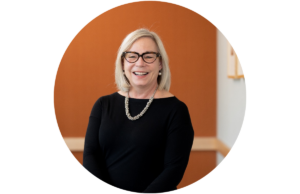Branding–Key to your Leadership Legacy
By D. Wayne Langley, president, Varsity Branding (Guest Post)
Effectively leveraging your organization’s reason for existence has never been more challenging. The business of providing services to an aging population has become increasingly complex and is likely to grow in complexity, cost and competitiveness over the coming decades.
Positioning your brand in today’s social media-hungry consumer’s mind must be intentional. Many aging services providers are revisiting their purpose for existence, evaluating their evolving culture and seeking out a more consumer-friendly brand positioning. In too many cases, these initiatives are undertaken as separate projects, with competing resources and objectives. Today’s leaders must have a clear understanding of the obvious — and subtle — connections between mission, culture and brand.
On September 20, at the Global Ageing Conference in Montreux, Switzerland, Lawrence D. Carlson, president and CEO of United Methodist Communities; Bob Dahl, president and CEO of Elim Care, Inc.; and myself will present “Branding — Key to Your Leadership” at 2:30 p.m.
Using examples from our own experience, we will explore the value of a strong brand and the importance of its connection to mission and organizational structure. In addition to the panel discussion, there will be time for the audience to ask questions and share their own experiences with branding and culture.
Lawrence D. Carlson will discuss how United Methodist Communities (UMC) recently forged a fresh brand that reinforces its heritage, leverages its unique sense of community and provides a contemporary brand platform from which to launch more consumer-friendly initiatives that will sustain its mission over the next century.
Bob Dahl will share tactics his team used to invent a new brand for Elim Care, firmly founded upon its long-standing vision to provide quality, compassion and innovative housing and services.
Leadership at both UMC and Elim Care recognized that they were in need of a brand that genuinely conveyed the truth of their organizations.
Some questions to ask yourself as you begin to evaluate your own brand:
• How are consumers reacting to your brand as it exists today? (If you haven’t updated your brand within the past five years, you are likely overdue.)
• Are all your lines of care and services operating smoothly? (A Harris Interactive poll found that 73% of people love a brand because of excellent customer service.)
• How engaged is your workforce? (According to a 2016 Nielson poll, only 32% of the average workforce is engaged.)
Attending this seminar will help you assess your organization’s strengths and weaknesses in order to make decisions regarding any proposed shifts toward a new or refreshed brand. We’ll also cover common branding mistakes that can derail your reputation and confuse the marketplace.
Creating an organization that cares about how it conducts business and that does not fall prey to the temptation to compromise its values is one of your leadership imperatives. Please join us in September for a lively discussion that can help you connect your purpose, culture and brand to ensure that your organization’s mission is forever sustainable.
About the Author
 Wayne Langley, President, Varsity, Denver, Colorado, United States
Wayne Langley, President, Varsity, Denver, Colorado, United States
Wayne currently leads a leading mature market consulting firm, providing strategic marketing and communications services as well as sales and organizational performance consulting. As president, Wayne is responsible for Varsity’s uniquely integrated practices that represent a comprehensive solutions model for addressing today’s complex business challenges. During his short time with Varsity, Wayne has developed an organizational performance consulting practice focused on helping clients ensure a level of operational excellence consistent with their brand promises. Over his career, Wayne has created opportunities to meet the unique needs of senior living organizations. He possesses an invaluable combination of strategy development expertise, business development experience and operational understanding to help clients more effectively achieve their organizations’ business objectives.





